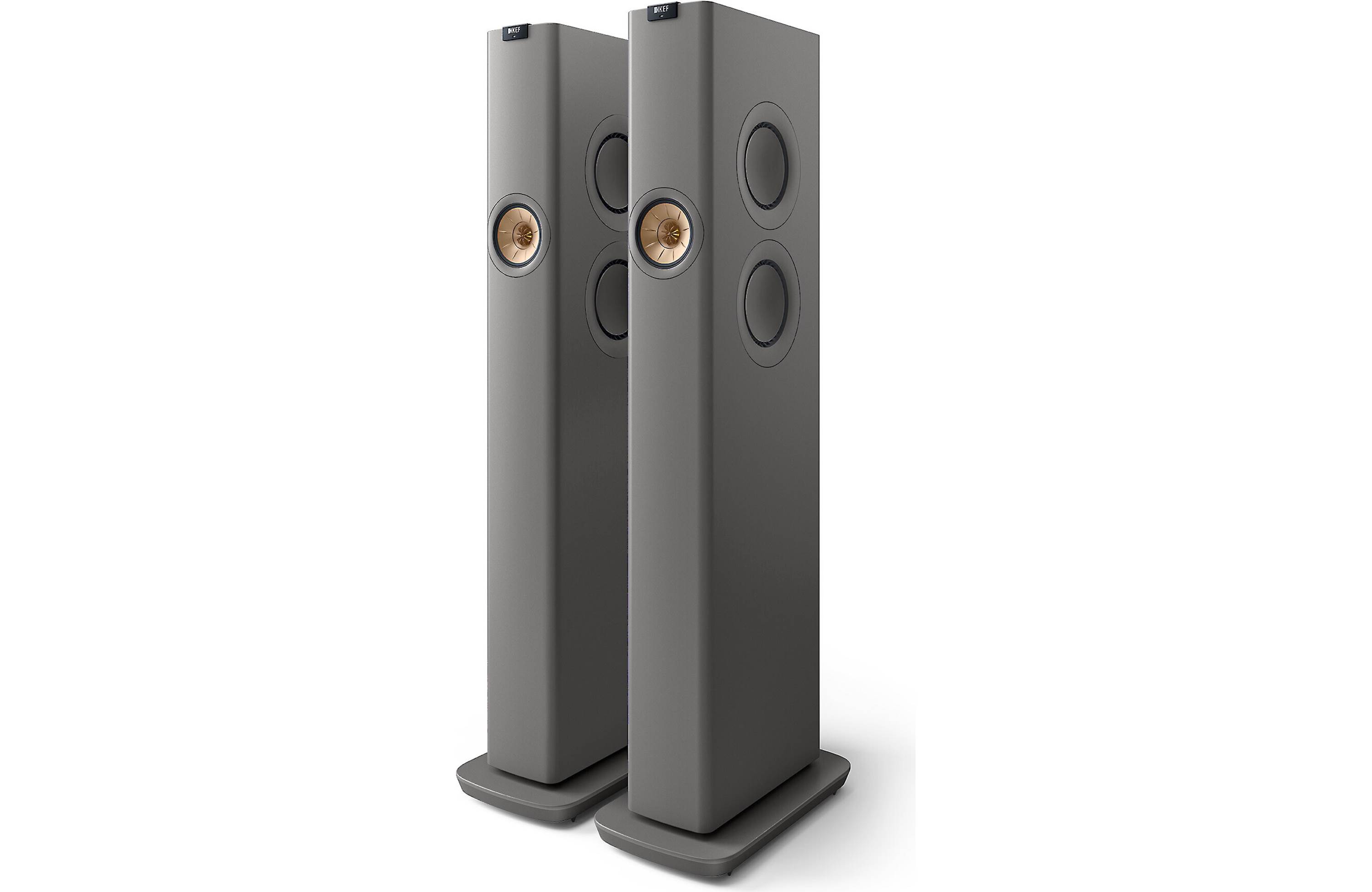Foreword / YouTube Video Review
Given I couldn’t find anyone to loan a pair but had so many requests for reviewing the LS60, I purchased these myself to review. If after reading this review you decide to buy a pair of these speakers then please consider using one of the affiliate links below. This earns me a small commission at no additional cost to you.
All my reviews are done on my own time with great care to give you all the best set of data and information I can provide in order to help you make a well-informed purchase decision. I offer this for free to all who are interested. In return, if you want to support this site please see the bottom of this review for ways you can help. It is greatly appreciated.
The review on this website is a brief overview and summary of the objective performance of this speaker. It is not intended to be a deep dive. Moreso, this is information for those who prefer “just the facts” and prefer to have the data without the filler. The video below has more discussion with respect to the technical merits and subjective notes I had during my listening sessions.
- tri-amped design with separate woofer, midrange, and tweeter amplifiers for greater headroom and lower distortion
- Uni-Q Driver Array technology makes your entire room sound like the “sweet spot”
- 3/4” vented aluminum dome tweeter with Metamaterial Absorption Technology
- amplifier power: 100 watts (Class AB)
- 4” aluminum cone midrange driver
- amplifier power: 100 watts (Class D)
- four 5-1/4” Uni-Core force-cancelling Driver woofers
- amplifier power: 500 watts (Class D)
- frequency response: 31-24,000 Hz (±3dB)
- max. SPL: 111 dB
- Bluetooth 4.2 high-quality audio streaming performance
- built-in dual-band Wi-Fi® for audio streaming from your network
- compatible streaming platforms include Apple AirPlay® 2, Google Chromecast, and Roon (with Fall 2022 firmware update)
- uPnP for playing music files from your local network
- KEF Connect app offers comprehensive remote control via your Apple® or Android™ device
- supported streaming services: Spotify via Spotify Connect , TIDAL via TIDAL Connect, Amazon Music, Qobuz, Deezer, and more
- Primary speaker connections:
- HDMI eARC input (accepts signals up to 24-bit/192kHz)
- Toslink optical digital input (up to 24-bit/96kHz)
- coaxial digital (up to 24-bit/192kHz)
- analog stereo RCA input
- RJ-45 Ethernet port for a wired network connection
- RCA subwoofer output
- supported file formats for all digital inputs: MP3, M4A, AAC, FLAC, WAV, AIFF, ALAC, WMA, LPCM, and Ogg Vorbis
- also supports DSD files up to 12.3 MHz and MQA files via network connection
- 8-5/16"W x 42-15/16"H x 15-9/16"D (with plinth); 5-1/8"W x 41"H x 12-5/8"D (without plinth)
- weight: 138 lbs. (both speakers)
- warranty: 2 years
As of this writeup MSRP is approximately $7000/pair. They can also be found on sale for $5000/pair.
CTA-2034 (SPINORAMA) and Accompanying Data
All data collected using Klippel’s Near-Field Scanner. The Near-Field-Scanner 3D (NFS) offers a fully automated acoustic measurement of direct sound radiated from the source under test. The radiated sound is determined in any desired distance and angle in the 3D space outside the scanning surface. Directivity, sound power, SPL response and many more key figures are obtained for any kind of loudspeaker and audio system in near field applications (e.g. studio monitors, mobile devices) as well as far field applications (e.g. professional audio systems). Utilizing a minimum of measurement points, a comprehensive data set is generated containing the loudspeaker’s high resolution, free field sound radiation in the near and far field. For a detailed explanation of how the NFS works and the science behind it, please watch the below discussion with designer Christian Bellmann:
IMPORTANT SETUP INFO:
This speaker was measured with the reference point at the tweeter for the majority of the data you will see here (designated as “0°”) but I have also provided some data for the off-axis response at 15° which is typically the best aiming position of 10-20° for coincident midrange/tweeter designs such as this KEF. Speaker was broken in.
Measurements are provided in a format in accordance with the Standard Method of Measurement for In-Home Loudspeakers (ANSI/CTA-2034-A R-2020). For more information, please see this link.
CTA-2034 / SPINORAMA:
The On-axis Frequency Response (0°) is the universal starting point and in many situations it is a fair representation of the first sound to arrive at a listener’s ears.
The Listening Window is a spatial average of the nine amplitude responses in the ±10º vertical and ±30º horizontal angular range. This encompasses those listeners who sit within a typical home theater audience, as well as those who disregard the normal rules when listening alone.
The Early Reflections curve is an estimate of all single-bounce, first-reflections, in a typical listening room.
Sound Power represents all of the sounds arriving at the listening position after any number of reflections from any direction. It is the weighted rms average of all 70 measurements, with individual measurements weighted according to the portion of the spherical surface that they represent.
Sound Power Directivity Index (SPDI): In this standard the SPDI is defined as the difference between the listening window curve and the sound power curve.
Early Reflections Directivity Index (EPDI): is defined as the difference between the listening window curve and the early reflections curve. In small rooms, early reflections figure prominently in what is measured and heard in the room so this curve may provide insights into potential sound quality.
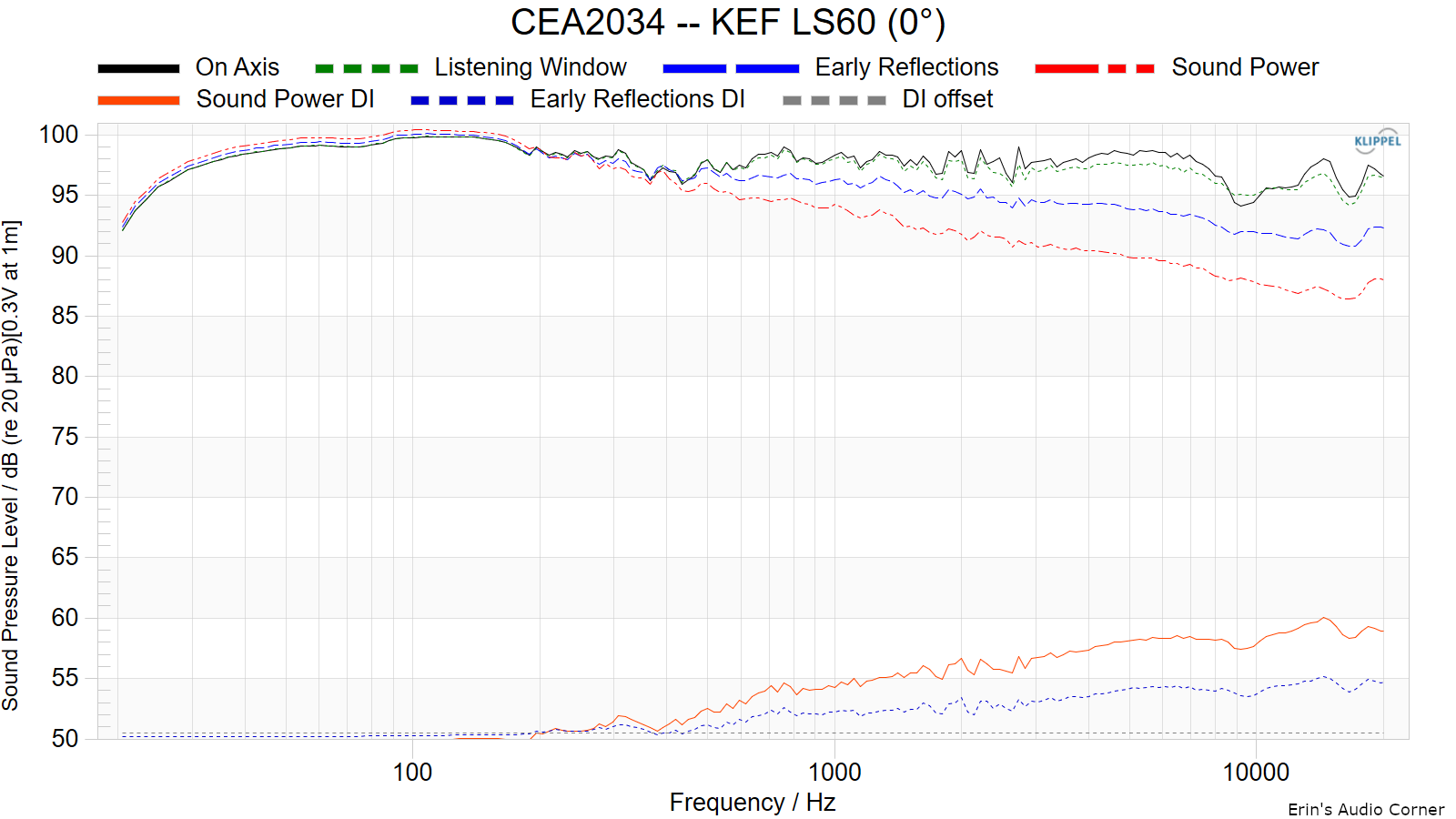
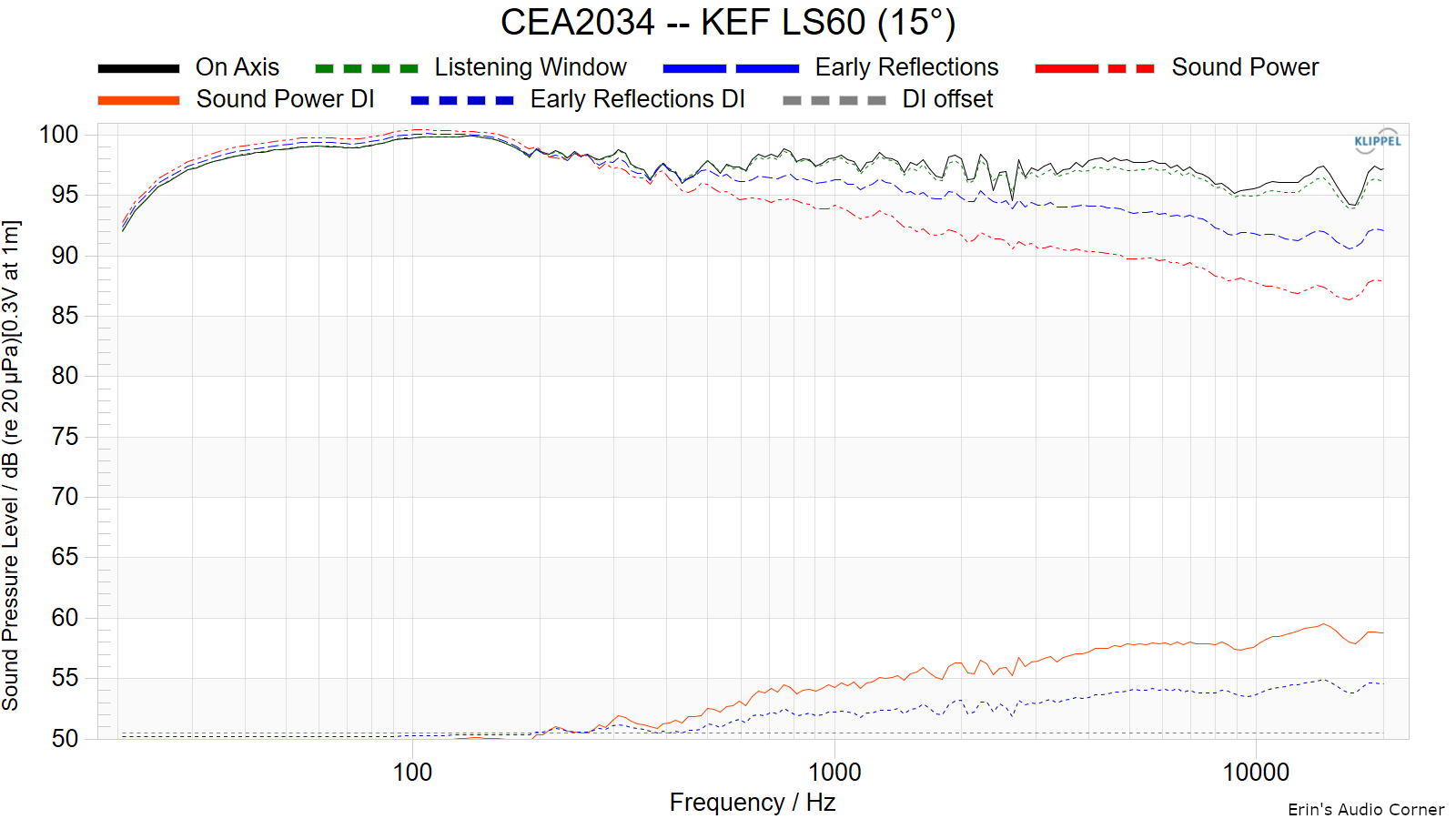
Early Reflections Breakout:
Floor bounce: average of 20º, 30º, 40º down
Ceiling bounce: average of 40º, 50º, 60º up
Front wall bounce: average of 0º, ± 10º, ± 20º, ± 30º horizontal
Side wall bounces: average of ± 40º, ± 50º, ± 60º, ± 70º, ± 80º horizontal
Rear wall bounces: average of 180º, ± 90º horizontal
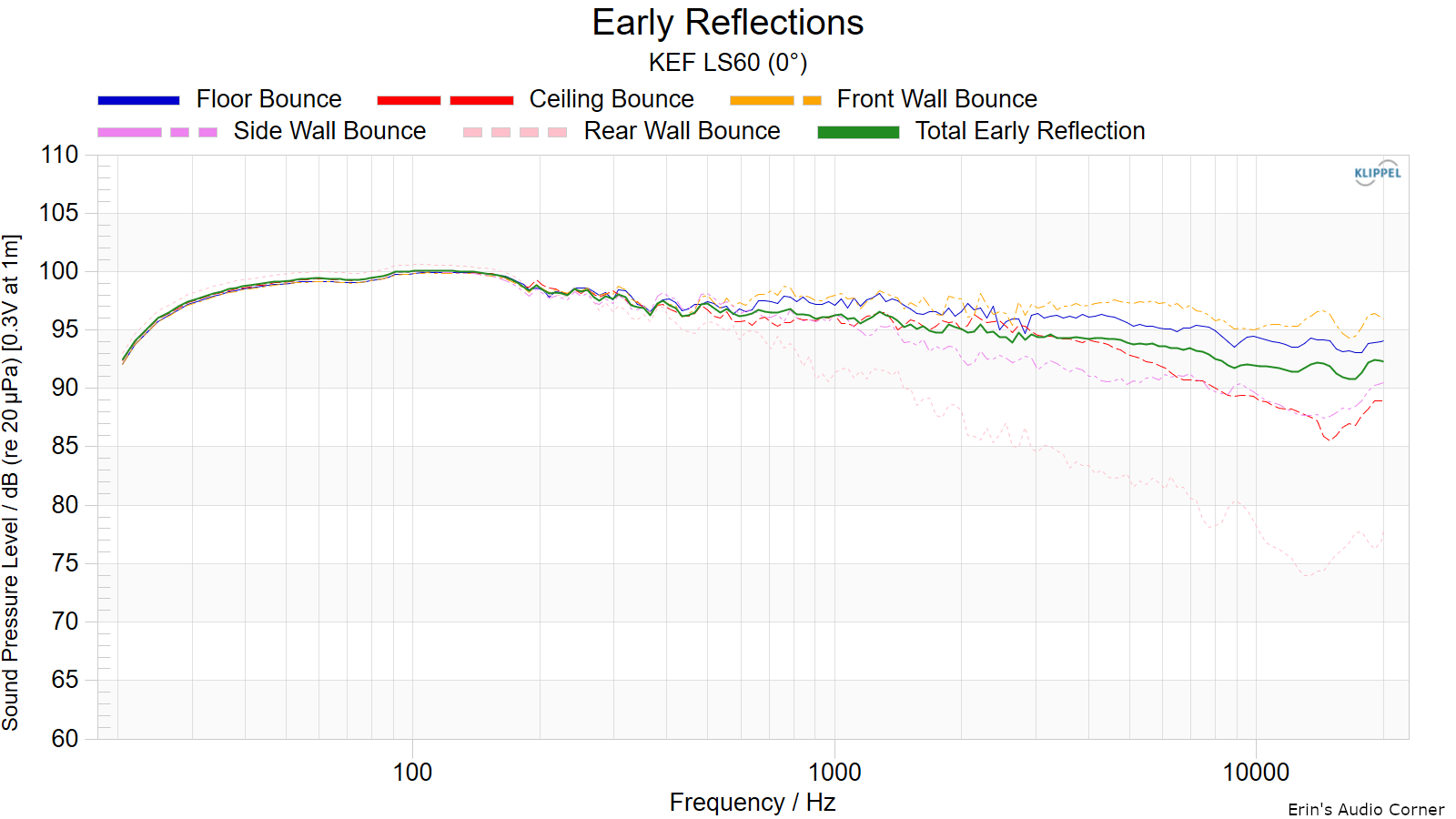
Estimated In-Room Response:
In theory, with complete 360-degree anechoic data on a loudspeaker and sufficient acoustical and geometrical data on the listening room and its layout it would be possible to estimate with good precision what would be measured by an omnidirectional microphone located in the listening area of that room. By making some simplifying assumptions about the listening space, the data set described above permits a usefully accurate preview of how a given loudspeaker might perform in a typical domestic listening room. Obviously, there are no guarantees, because individual rooms can be acoustically aberrant. Sometimes rooms are excessively reflective (“live”) as happens in certain hot, humid climates, with certain styles of interior décor and in under-furnished rooms. Sometimes rooms are excessively “dead” as in other styles of décor and in some custom home theaters where acoustical treatment has been used excessively. This form of post processing is offered only as an estimate of what might happen in a domestic living space with carpet on the floor and a “normal” amount of seating, drapes and cabinetry.
For these limited circumstances it has been found that a usefully accurate Predicted In-Room (PIR) amplitude response, also known as a “room curve” is obtained by a weighted average consisting of 12 % listening window, 44 % early reflections and 44 % sound power. At very high frequencies errors can creep in because of excessive absorption, microphone directivity, and room geometry. These discrepancies are not considered to be of great importance.

Horizontal Contour Plot (normalized):
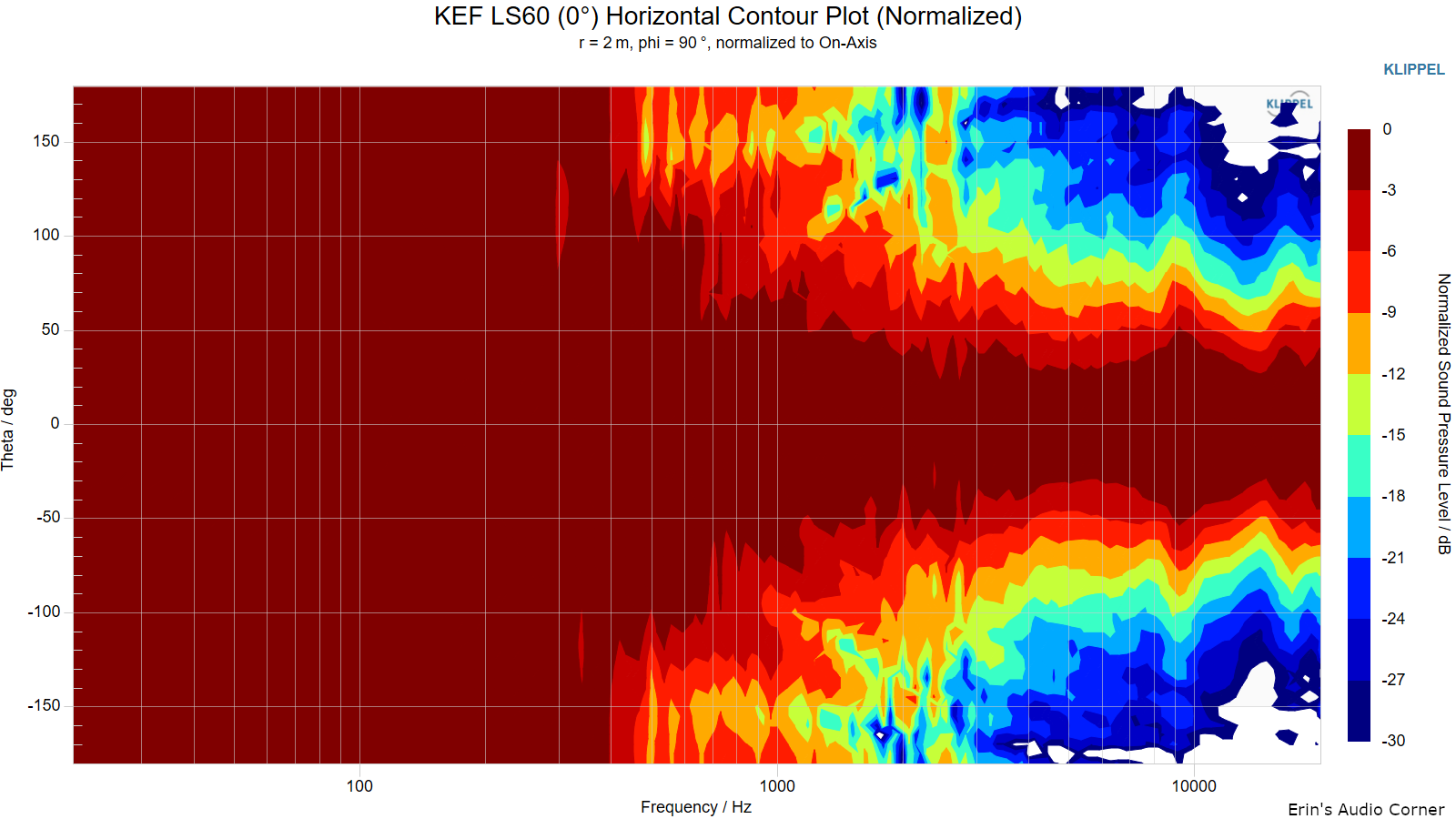
Vertical Contour Plot (normalized):
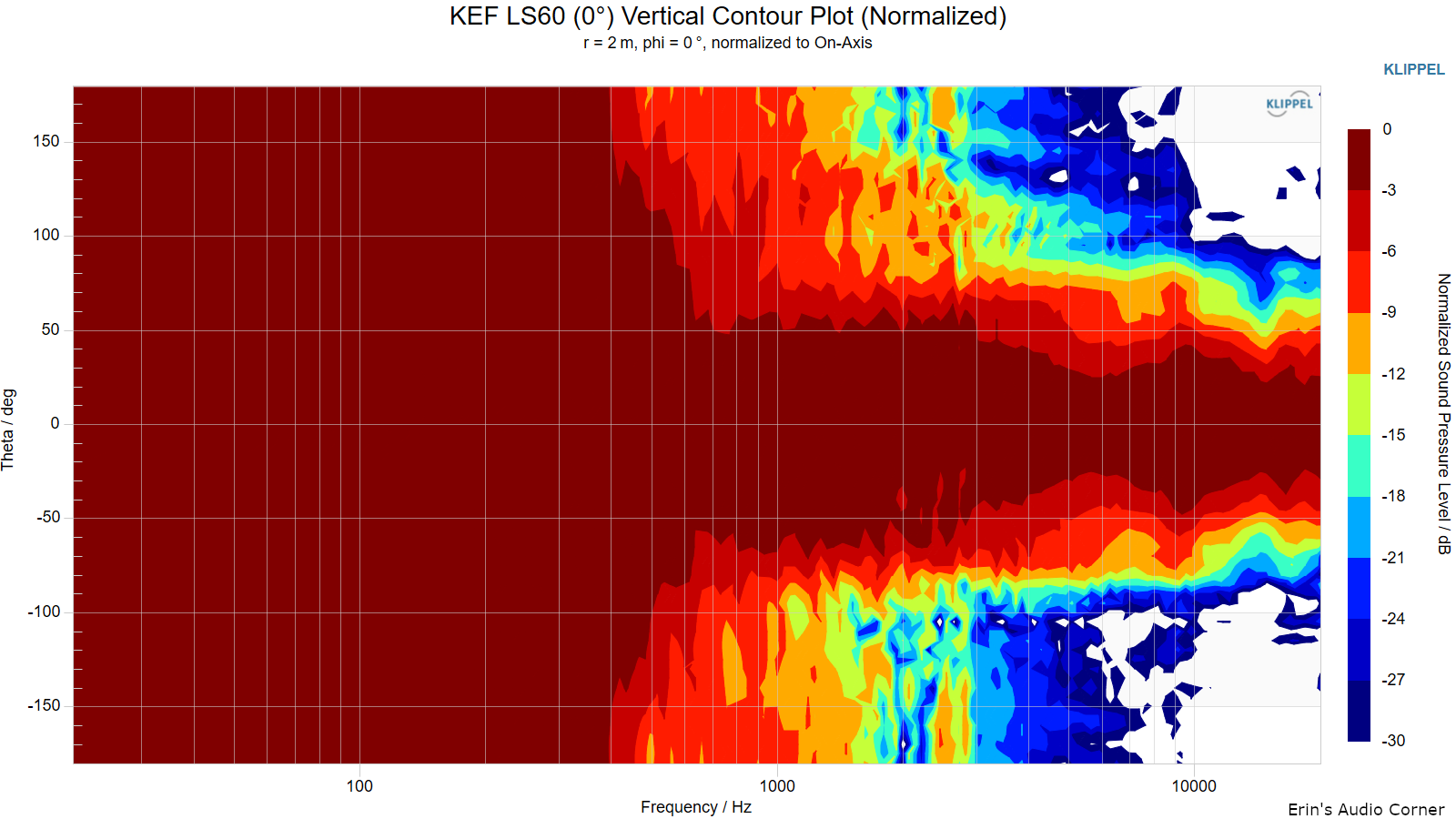
“Globe” Plots
Horizontal Polar (Globe) Plot:
This represents the sound field at 2 meters - above 200Hz - per the legend in the upper left.
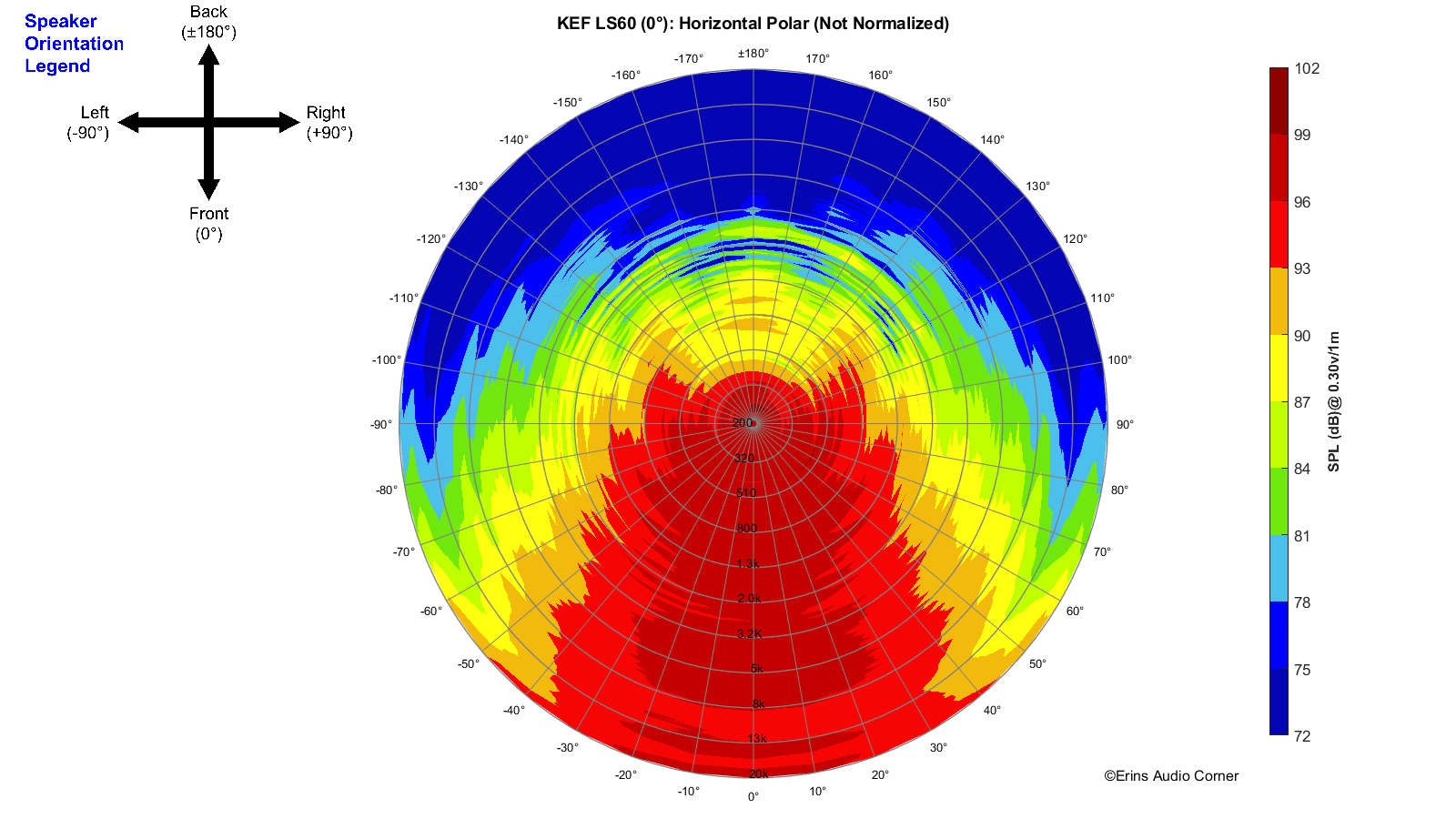
Vertical Polar (Globe) Plot:
This represents the sound field at 2 meters - above 200Hz - per the legend in the upper left.
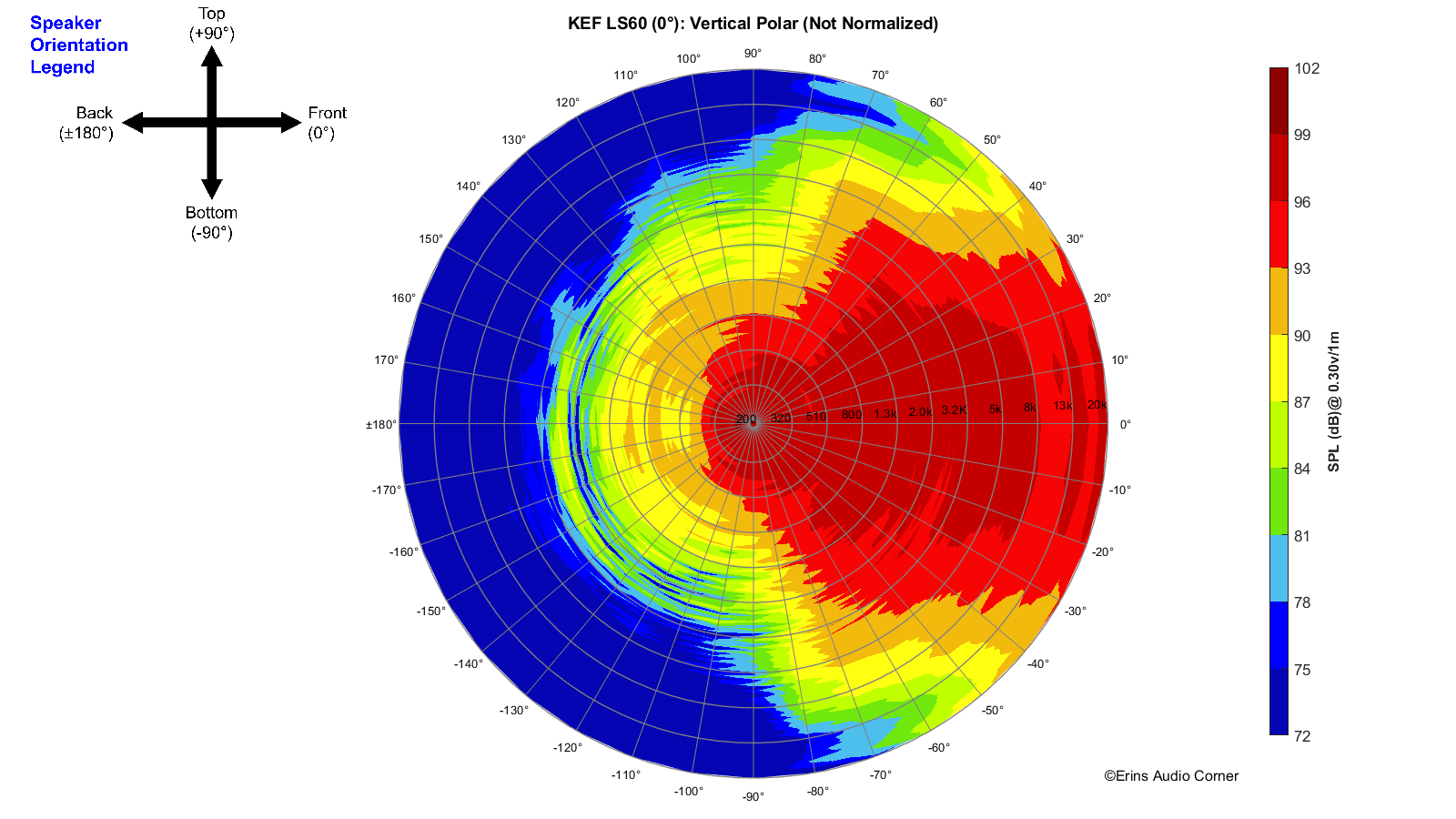
Additional Measurements
Response Linearity
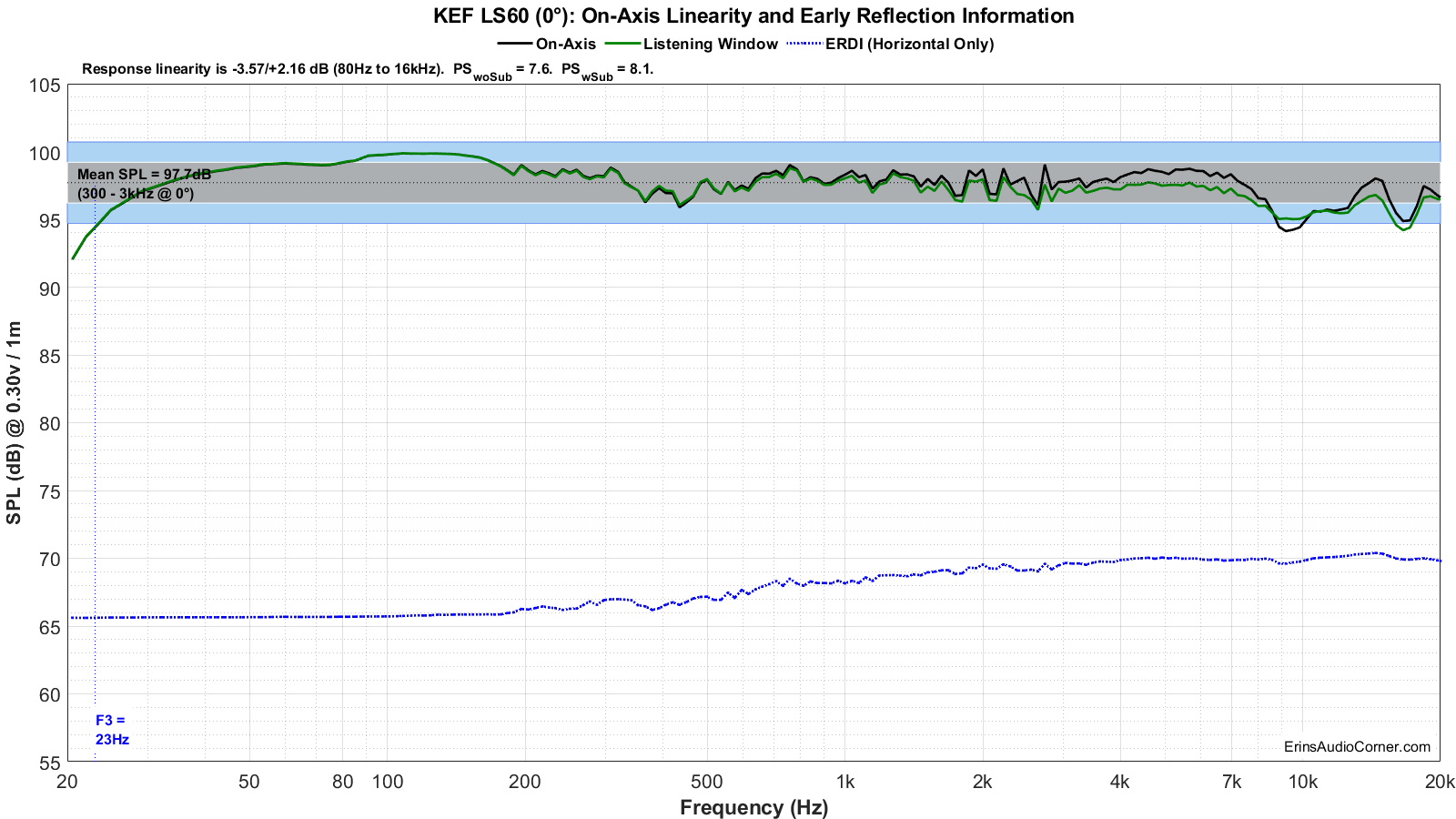
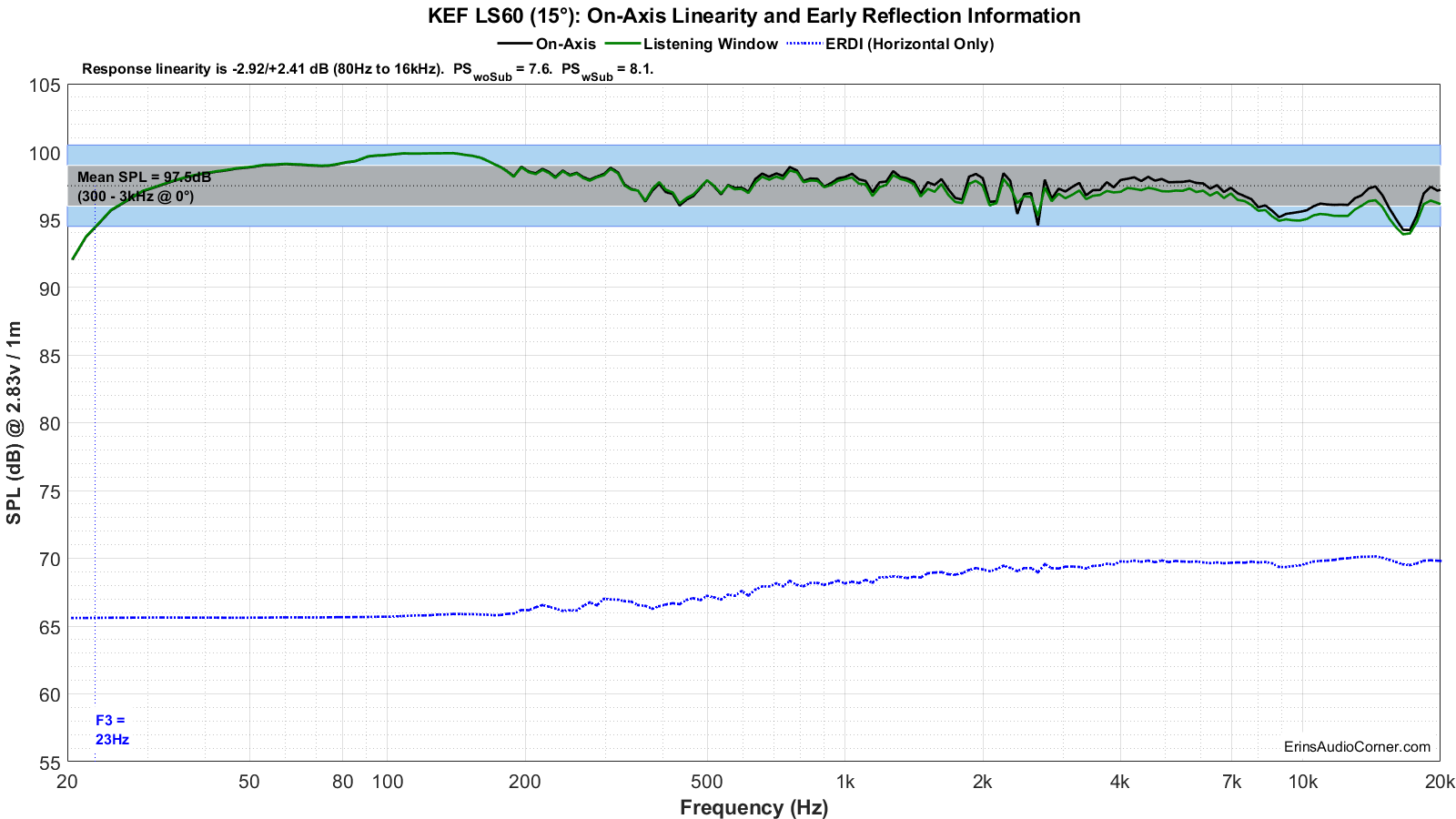
Step Response
With and without "Phase Correction" enabled.

Group Delay

Bass and Treble Adjustments (via app)
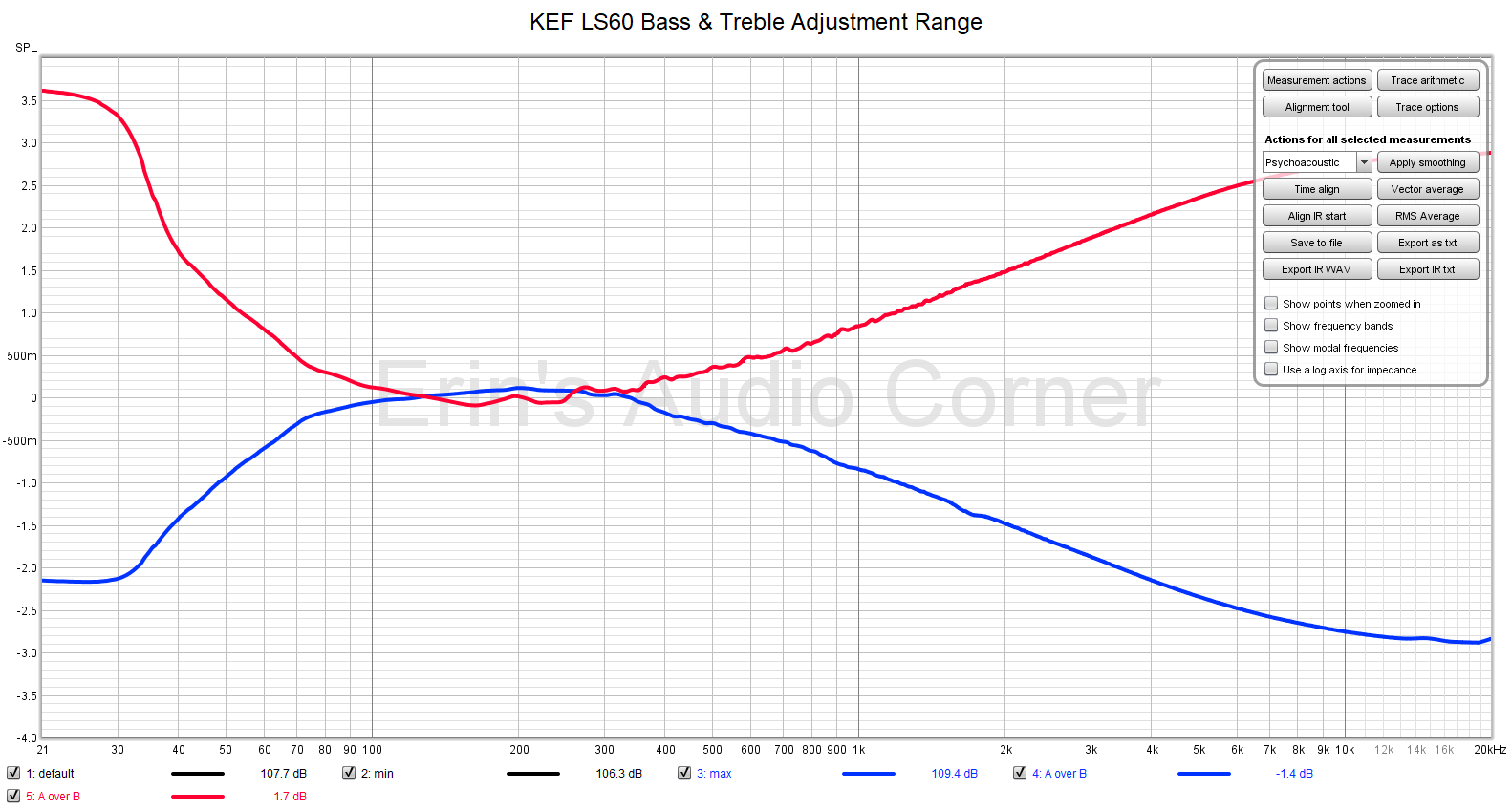
Wall Mode Adjustments (via app)
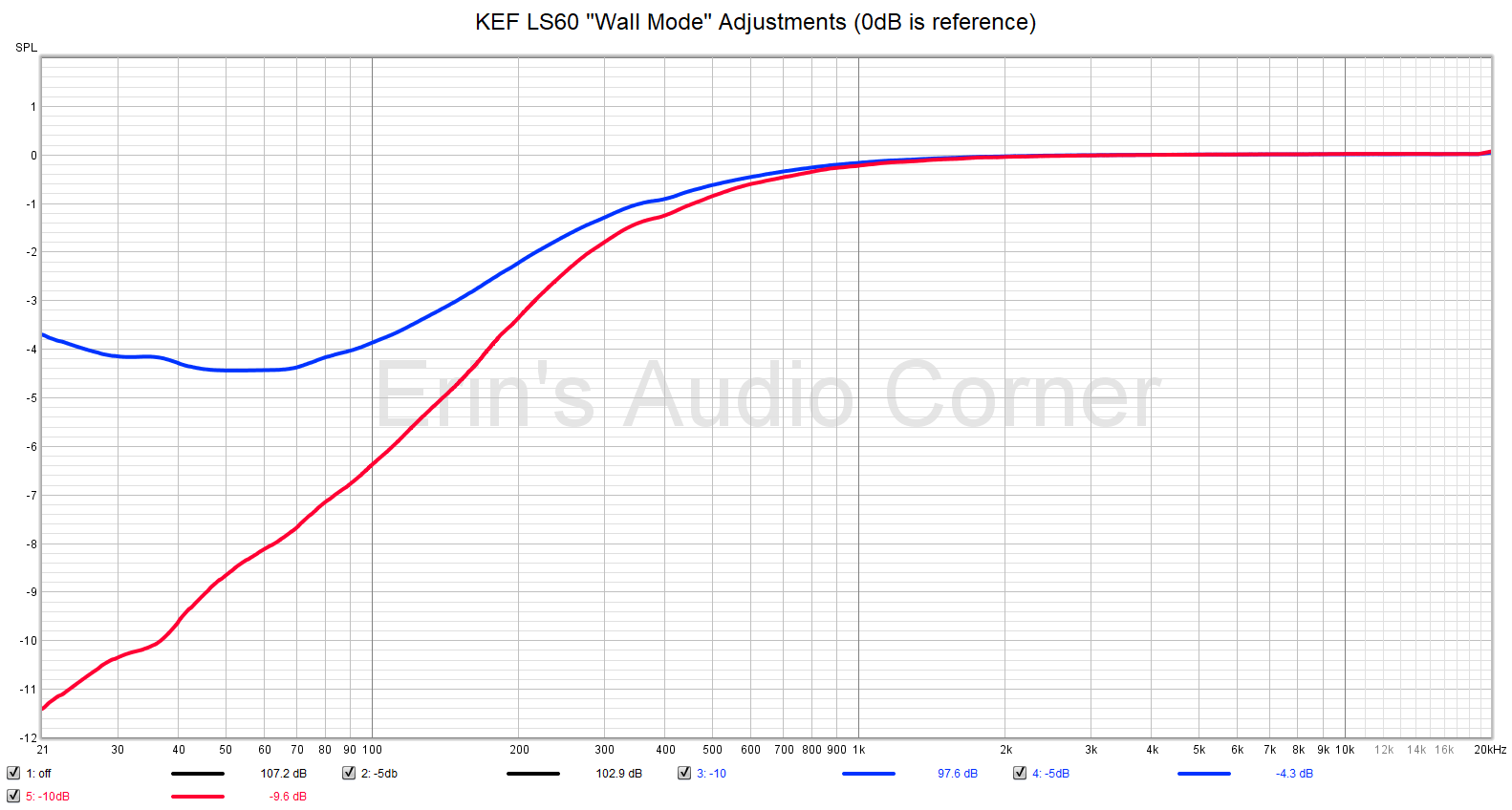
Harmonic Distortion
Harmonic Distortion at 86dB @ 1m:

Harmonic Distortion at 96dB @ 1m:
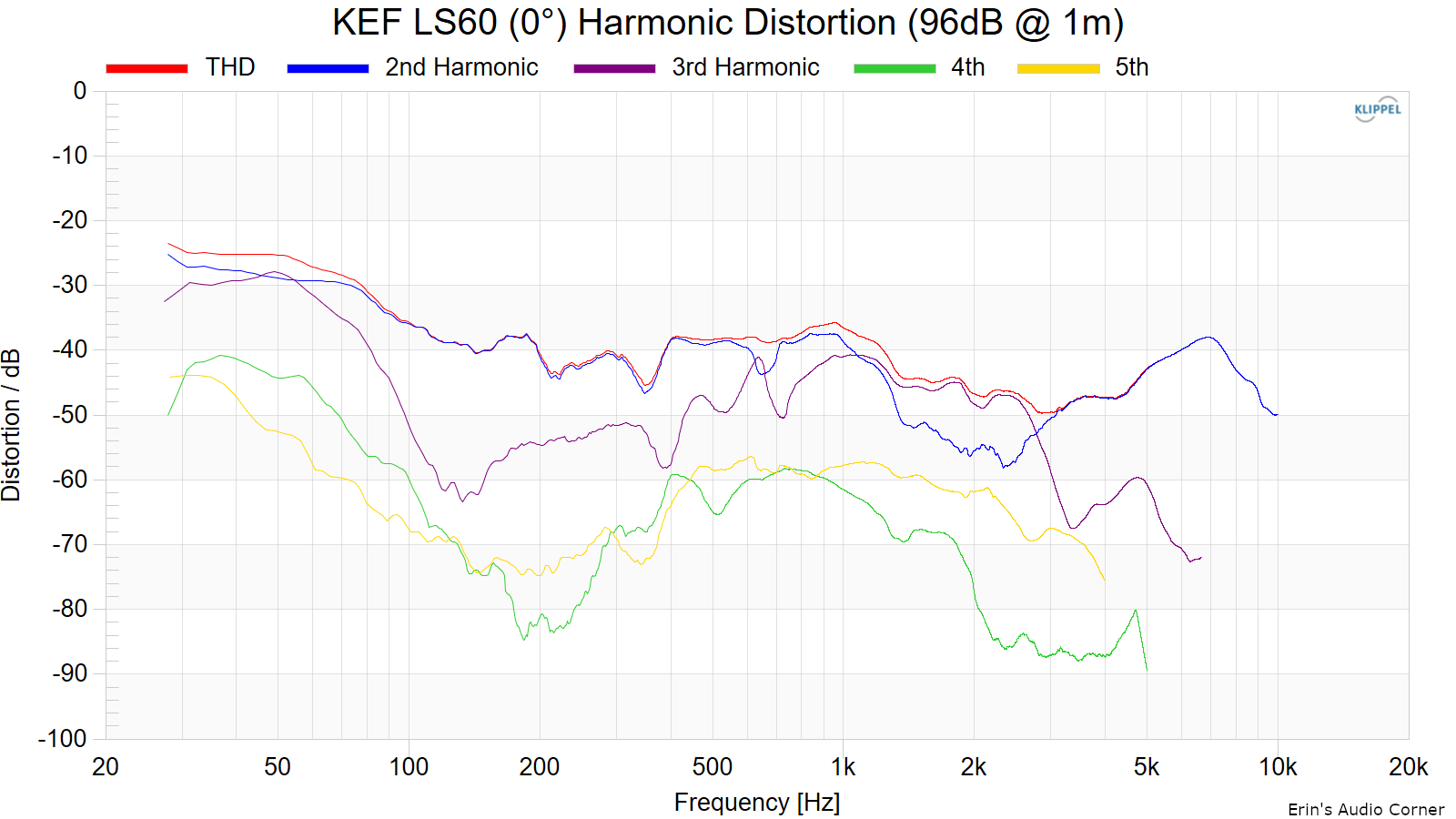
Dynamic Range (Instantaneous Compression Test)
The below graphic indicates just how much SPL is lost (compression) or gained (enhancement; usually due to distortion) when the speaker is played at higher output volumes instantly via a 2.7 second logarithmic sine sweep referenced to 76dB at 1 meter. The signals are played consecutively without any additional stimulus applied. Then normalized against the 76dB result.
The tests are conducted in this fashion:
- 76dB at 1 meter (baseline; black)
- 86dB at 1 meter (red)
- 96dB at 1 meter (blue)
- 102dB at 1 meter (purple)
The purpose of this test is to illustrate how much (if at all) the output changes as a speaker’s components temperature increases (i.e., voice coils, crossover components) instantaneously.

Multitone Distortion
The following tests are conducted at (4) approximate equivalent output volumes: 70/79/87/96dB @ 1 meter. The (4) voltages listed in the legend result in these SPL values. This test signal is dense, similar to pink noise and excites the entire spectrums listed below at the same time. The test signal lasts 30 seconds. This is different than the sine wave test signal used to measure frequency response. The purpose of this distortion and compression test is to illustrate how much (if at all) the output changes as a speaker’s components temperature increases (i.e., voice coils, crossover components) over time.
Given the test signal is similar to pink noise and exciting the entire spectrum at the same time I also include compression results, which is captured at the same time distortion is captured. Sometimes these results differ from the compression results you see above (namely with powered designs incorporating DSP-based limiting).
Note: The KLIPPEL software shows compression in the positive scale.
The test was conducted in (3) manners:
- Full bandwidth (20Hz to 20kHz)
- 80Hz to 20kHz
The reason for the two measurements is to simulate running the speaker full range vs using a high-pass filter at 80Hz. However, note: the 2nd test low frequency limit at 80Hz is a “brick wall” and doesn’t quite emulate a standard filter of 12 or 24dB/octave. But… it’s close enough to illustrate the point.
- Full bandwidth (20Hz to 20kHz)
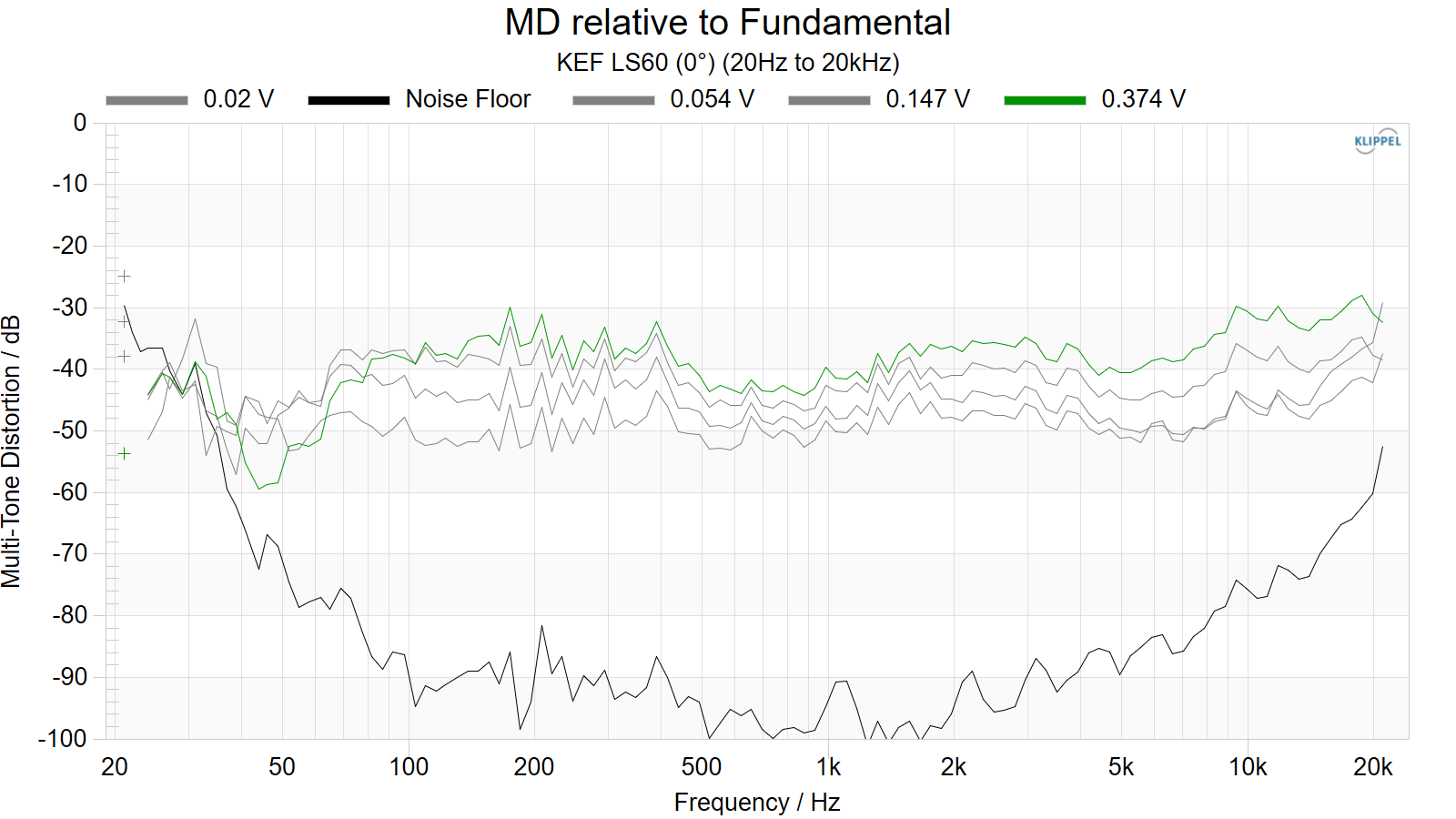
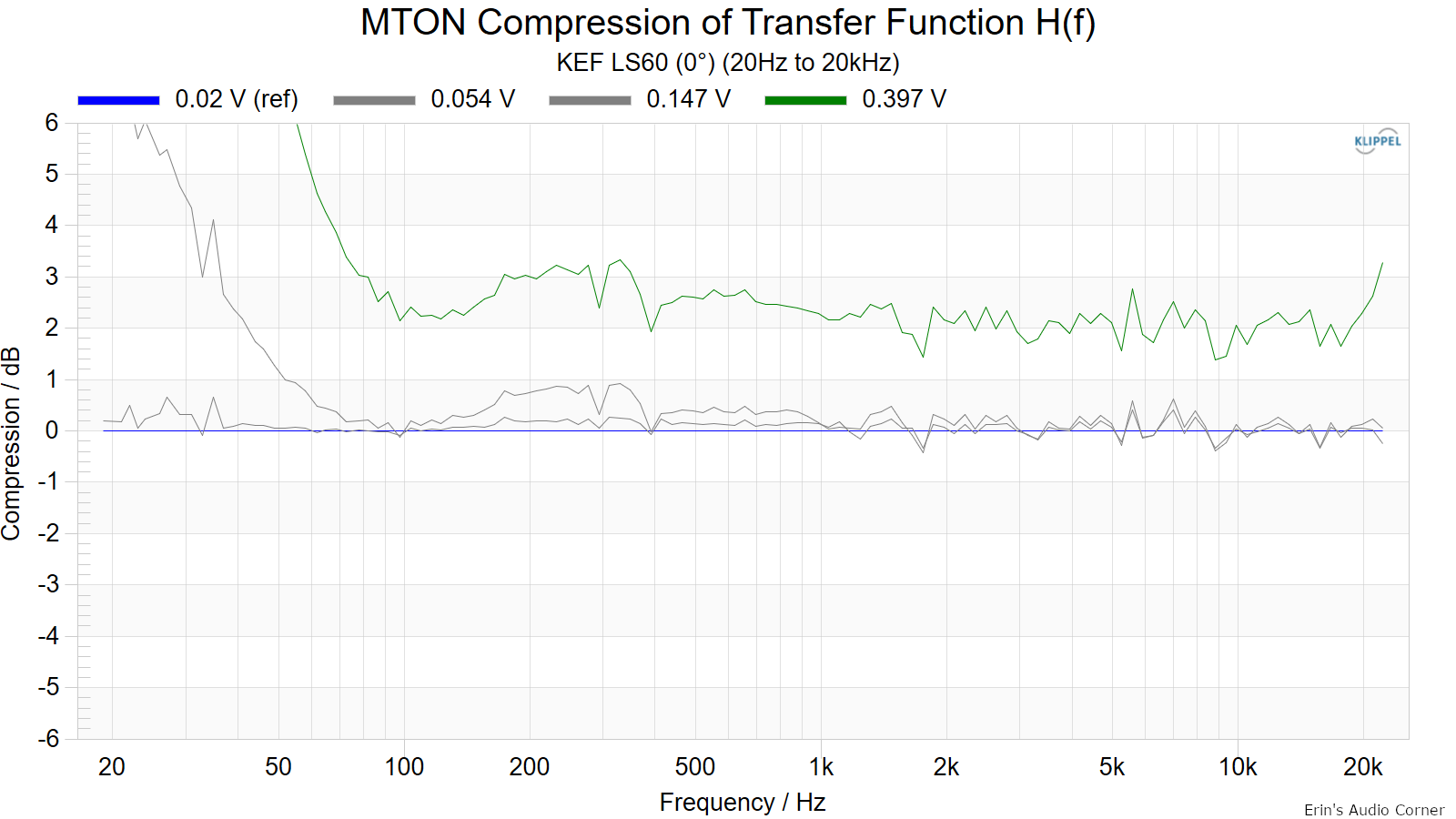
- 80Hz to 20kHz
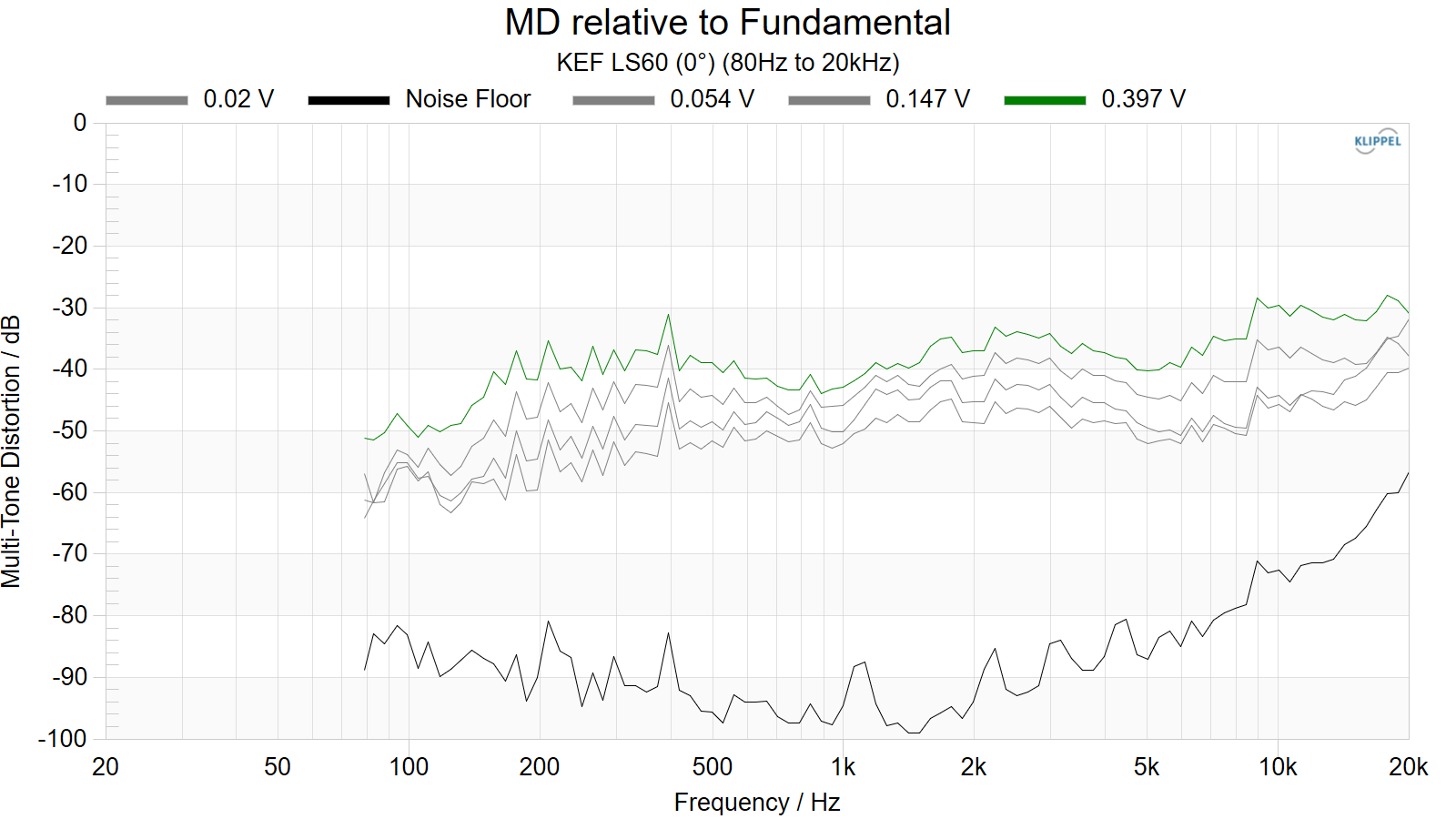
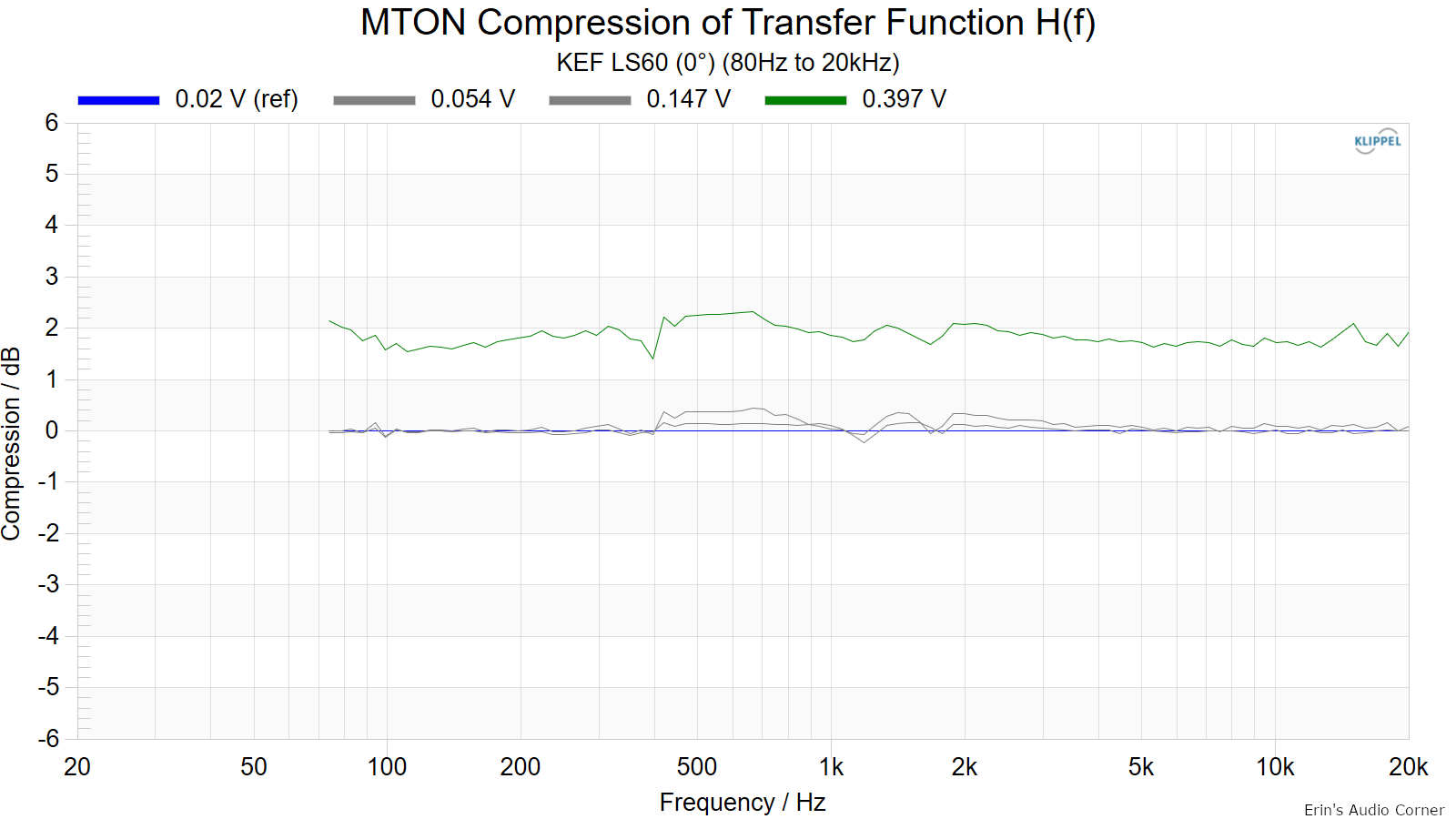
Parting / Random Thoughts
See video linked above for subjective and objective analysis. I have provided a brief transcript below.
A very slim design that doesn’t call attention to itself. A subwoofer is not entirely necessary as the response of this speaker has an anechoic F3 of ~23Hz. Though, if one wants to add a subwoofer(s) then you can do so easily with the subwoofer outputs. Combined with providing a plethora of inputs from HDMI to wireless streaming, these factors make the LS60 a huge leap forward from typical “soundbar replacement” speakers.
Neutral speaker at any position. Though, aiming the speaker off-axis by 10-20° is recommended (as is the case with coincident/coaxial designs, in general). This smooths the HF diffraction ~9kHz which otherwise can sound like some top-end “shimmer/sparkle” is missing from instruments such as cymbals and shakers, etc. You do not have to sit in the perfect spot to get great tonality; you can be off axis by as much as 50° and still enjoy the same overall tonality (but not stereo imaging thanks to time/level differences, a problem with stereo listening itself).
The bass below 200Hz is slightly elevated which can result in a perceived bass bump in the listening position. I found this to be a bit too much when I had the speakers placed near the wall behind them. The KEF Connect app allowed me to resolve that by adjusting the “wall mode” to about -3dB and using the bass in “extended” mode which was a great compromise to get full 20Hz to 20kHz sound.
Output seems limited to about 96dB/1m (anechoic) for a single speaker. In my listening in my room at approximately 10 feet listening distance I found I was volume limited to 100-105dB (depending on source). This should be adequate for most but if you have a very large room with further seating distance than this you may find yourself wanting additional output. Or you may not. Use an SPL meter to determine your volume needs if this is a concern for you. You may find you don’t listen as loud as you think.
Overall the design allows for a truly full-range speaker that negates the need for a separate subwoofer (at sane output levels) and integrates into any living room without yelling “I’m a speaker, look at me!” the way many other options do. The overall floorspace these consume is less than that of most bookshelf speakers with stands; the latter rarely achieve response below 50Hz.
Support / Contribute
If you find this review helpful and want to help support the cause that would be AWESOME! There are a few ways you can do so below. Your support helps me pay for new items to test, hardware, miscellaneous items needed for testing, new speakers to review and costs of the site’s server space and bandwidth. Any help is very much appreciated.
Join my Patreon: Become a Patron!
Shopping
If you are shopping at any of the following stores then please consider using my generic affiliate links below to make the purchase through.
Purchases through these links can earn me a small commission - at no additional cost to you - and help me continue to provide the community with free content and reviews. Doesn’t matter if it’s a TV from Crutchfield, budget speakers from Audio Advice or a pair of socks from Amazon, just use the link above before you make your purchase. Thank you!
